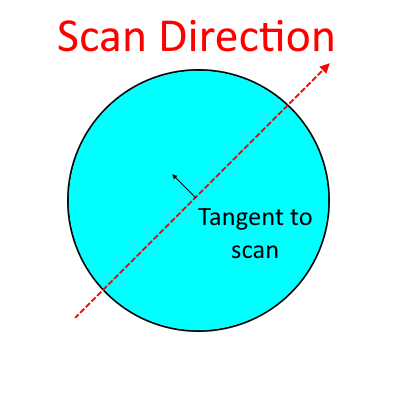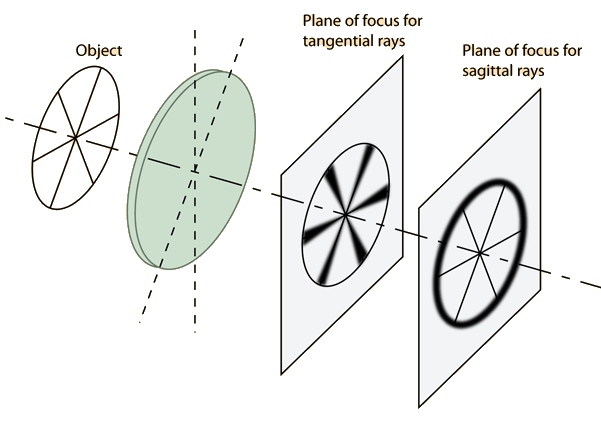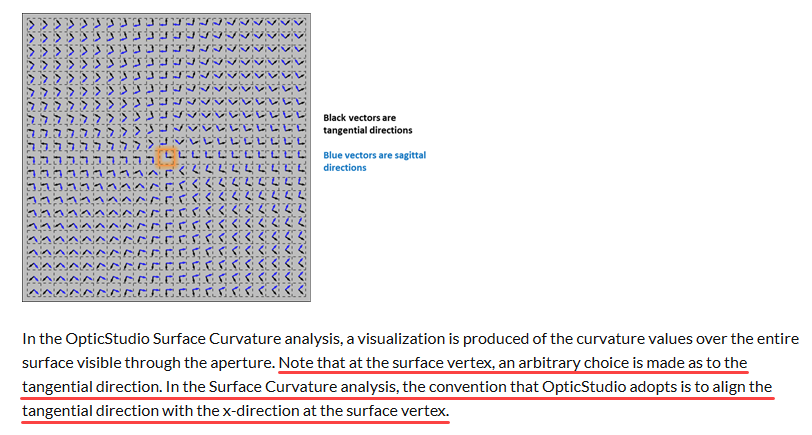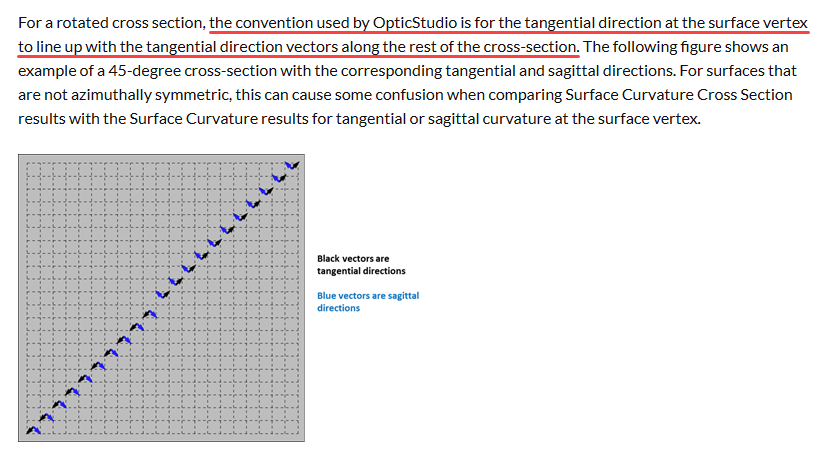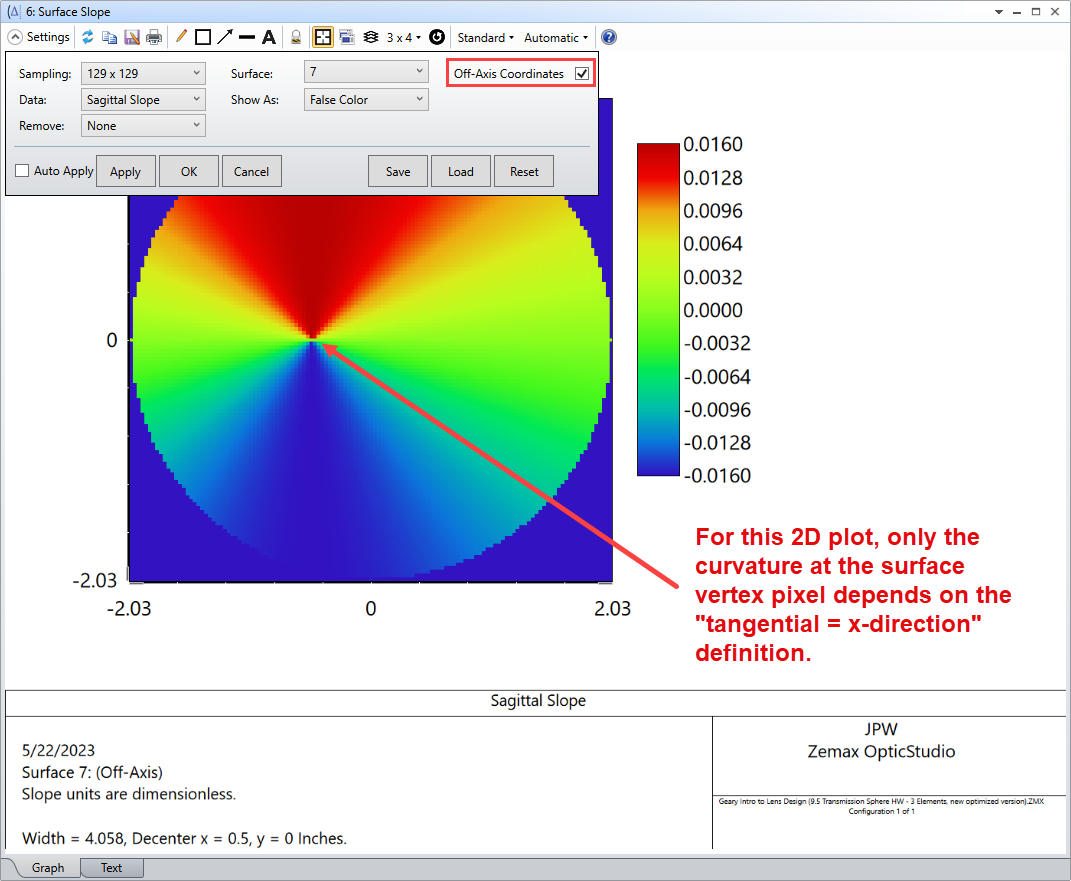Hi,
I was reading Shawn Gay’s excellent article on the geometry used by the various curvature calculations. In it, Shawn writes:
In the Surface Curvature analysis, the convention that OpticStudio adopts is to align the tangential direction with the x-direction at the surface vertex.
This statement is true and of course the choice is arbitrary, but it seems to me this convention is 90 degrees at odds with where we use the term tangential elsewhere. The surface curvature data is independent of ray tracing, but when doing raytracing the convention OS uses is that tangential is along the y-axis.
I must admit I assumed that this was the case in the curvature plots. I read the documentation, and it’s not described there. I searched for a KB article instead and found what I needed to correct my understanding. But since the convention is arbitrary, did we have to use a convention that is orthogonal to the convention used elsewhere?
This is an old feature and I know that changing the convention will be problematic for backwards compatibility, -and I also know whose watch this decision was made on 😀 - but maybe the documentation, rather than a KB article, could point out the difference in convention?
- Mark





